The educational materials listed on this page are about Soybeans.
Agronomic crops are field crops such as corn, soybeans, wheat and other grains. Soybeans are an important crop for both livestock feed and human consumption. Growing soybeans involves understanding soybean growth stages, the soybean market and production factors such as soybean yield per acre. Soybean farming can be a very profitable enterprise when a producer has enough acreage, the ability to increase soil fertility and a strong understanding of what it takes to increase the average soybean yield per acre. Although a producer has little control over the average soybean price per bushel that the market sets, a number of marketing strategies can be used to increase profit margins, while many production practices and overall soil management can improve the soybean crop in most soybean production systems. Key practices include agronomic, soybeans, cropping systems, cover crops, crop rotation, fertilizers, crop improvement and selection, physical control, soil management.
SARE’s Crop Rotation on Organic Farms A Planning Manual is a resource for farmers looking to integrate crop rotation into their operation to enhance organic matter and boost production. The Cover Crop Topic Room is a good starting point to learn about the benefits that cover crops can have on soil fertility to improve yield. A key resource to understanding the critical relationship between soil and crop is SARE’s widely used book, Building Soils for Better Crops. This book lays the foundation for understanding soil structure, soil fertility, and overall soil management.
Showing 1-10 of 23 results

Manage Weeds on Your Farm Video Series
In this series, experienced farmers from around the country talk about how they have found success controlling weeds by following ecological principles, and without resorting to the use of herbicides. To do so, they rely on a range of cultural and mechanical practices, including diverse crop rotations, well-timed cultivation and targeting weeds when they're at […]
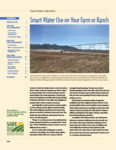
Smart Water Use on Your Farm or Ranch
As producers throughout the nation grow increasingly concerned about water scarcity, farmers, ranchers and agricultural educators are beginning to explore new, conservation-oriented approaches to water use.
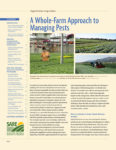
A Whole Farm Approach to Managing Pests
This 16-page bulletin helps producers—and the educators who work with them—use ecological principles across the entire farm to control pests.
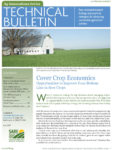
Cover Crop Economics
Cover crops can build soil health, control weeds, conserve moisture, provide grazing opportunities and more. But when do they start to pay for themselves? This analysis looks at the economics behind different management scenarios to determine if cover crops are likely to improve profitability in one, three or five years of use in corn and soybean rotations.

Improving Soil Health Through Cover Crops
Farmers around the country are discovering the power of cover crops to curb erosion and improve soil health. This video is from Pennsylvania, where a Penn State researcher and a grain farmer are partnering to spread the word.

Cover Crops for Soil Health Workshop
All session recordings and slide presentations from this three-day professional development workshop are available online. Hosted by Northeast SARE and Delaware State University in March 2016, this event addressed the latest research on the benefits and successful management of cover crops in grain, vegetable and animal production systems.

Cover Crop Innovators Video Series
Find short video profiles of farmers around the country who are using cover crops on their land.
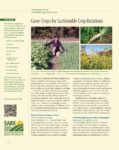
Cover Crops for Sustainable Crop Rotations
Cover crops are one of the best ways to improve soil health, reduce off-farm inputs and protect natural resources. Find a wealth of educational materials developed out of decades of SARE-funded cover crop research.

2014 National Conference on Cover Crops and Soil Health
All session recordings and slide presentations from the National Conference on Cover Crops and Soil Health are available online. Held in 2014 in Omaha, Neb., the event brought together 300 agricultural leaders and innovators to explore how we can make American agriculture more sustainable through improved soil health. Attendees represented agricultural industry, the farm community, academia, government, commodity and conservation organizations.
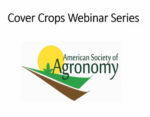
Cover Crop Management and Termination
Planning for proper spring management of your cover crop needs to happen before April. Learn from two experts in the field on a couple different methods for termination.